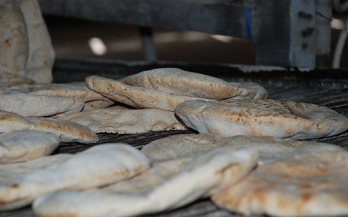The purpose of this study was to assess the performance of the iron spot test in Arabic bread made from white wheat flour. These results show that a field-friendly method for testing bread could have a useful role in the monitoring and evaluation process for flour fortification programs.
This article provides an overview of the BRINDA project and describes findings that will inform global guidelines on the assessment of anemia and micronutrient status and will guide the development of a research agenda for future longitudinal studies.
This study used data from three population-representative surveys of women of reproductive age in Kenya, Senegal and India to develop a new approach to apportion the population Universal Salt Iodization levels by the principal dietary sources of iodine intake, namely native iodine, iodine in processed food salt and iodine in household salt.
Multiple-micronutrient (MMN) fortification of beverages may be an effective option to deliver micronutrients to vulnerable populations. The aim of the present systematic review and meta-analysis is to evaluate the nutritional impacts of MMN fortified beverages in the context of low-middle income countries.
As no national data exist on the prevalence of micronutrient deficiencies, a survey was conducted in 2010 to assess the micronutrient status of randomly selected women of reproductive age and children aged 6–75 months.
The BRINDA project is a multiagency and multicountry collaboration that was formed to improve micronutrient assessment and to better characterize anemia. Findings from this project can inform guidelines and strategies to prevent and control micronutrient deficiencies and anemia globally.
In this paper, a household wealth index is developed and tested for participants in the cluster-randomized Sanitation, Hygiene, Infant Nutrition Efficacy trial in rural Zimbabwe.
The objective of this Food and Nutrition Bulletin supplement is to focus attention on the need to integrate actions to improve maternal, infant, and young child nutrition.
This supplement brings together papers focusing on the critical 1000 days of human development from pregnancy until 2 years of age.
The objective of this study was to document the achievements, challenges, lessons learned, and management responses associated with national fortification projects in Morocco, Uzbekistan, and Vietnam.










